 Wintertime photography can be challenging for a number of reasons. No, I’m not referring to the difficulties of keeping you and your batteries warm so that your camera AND your fingers continue to operation properly. I’ll assume that you already have that under control. If you don’t, here’s what you need to know: Gloves, hat, jacket, hand warmers and a thermos full of hot chocolate.
Wintertime photography can be challenging for a number of reasons. No, I’m not referring to the difficulties of keeping you and your batteries warm so that your camera AND your fingers continue to operation properly. I’ll assume that you already have that under control. If you don’t, here’s what you need to know: Gloves, hat, jacket, hand warmers and a thermos full of hot chocolate.
Ok, now that we got that stuff out of the way, let’s talk about the creative and technical aspects of wintertime photography, namely the challenges of dealing with snow and how to shoot winter photos that really pop.
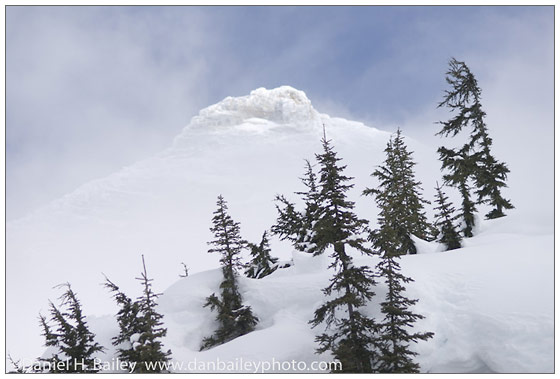
1. Exposure
This has always been the number one issue with winter photography. Since camera meters are traditionally calibrated to read neutral 18% gray, exposure meters tend to go haywire in the snow. The camera wants to reproduce the scene as an average tone, and so it underexposes the snow. Instead of being crisp white, snow that’s shot in many cameras appears blue and way too dark.
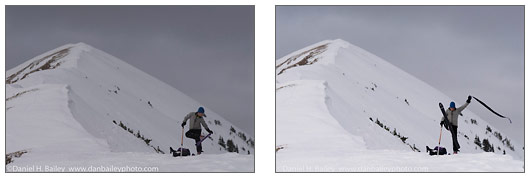 Two photos of the same scene taken with different exposure settings. Brighten up your snow photos for whiter snow. Overexpose by at least one stop using eposure compensation, using a larger aperture or increasing your exposure time. |
The advanced multi-segment and matrix exposure meters in many higher end cameras these days seem to do better with snow. They look at the entire scene and base it against a database of preprogrammed algorithms to set proper exposure. Most of the time they do a good job, but if you find that your camera underexposes snow scenes, then either put it on manual and open up one or two stops or set your exposure compensation dial to +1 to +2 or somewhere in between. The best way to nail this is to do some test shots and experiment so that you know how your camera sees the scene. And remember, you can always bump up the exposure of your images in your imaging software.
2. Contrast:
The next problem that photographers often have in snow is that the level of contrast between the bright white snow and the subject matter is wider than the camera sensor can handle. You either end up blowing out the whites, (of which there many!) or you lose your subject in shadow.
That said, snow does operate like an enormous reflector panel, so if need be, get closer and take advantage of the even lighting that snow throws upon your subjects.
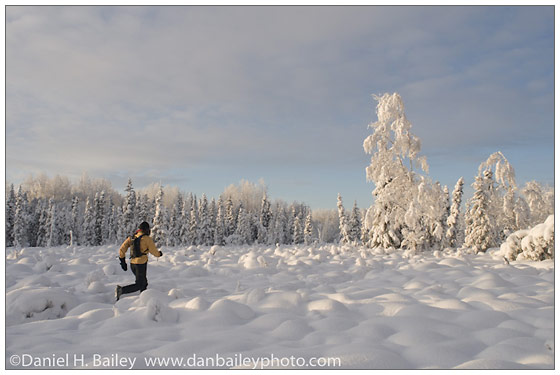
3. Light:
Since the snow is so bright, you’ll want to make sure that your subjects are lit by the sun, if it’s out. That will help you reduce contrast, preserve your highlights and make your subjects pop. If your subject is in the shadow, you’re likely to completely blow out the highlights and ruin the impact of your photo.
4. Subject Matter:
Generally, subjects shot against a darker background appear more saturated, so in order for your work to really stand out against the snow, you’ll need to shoot your subjects in a very dynamic way. Look for other dramatic elements that you can add to your compositions to add additional interest and consider shooting up close so that you really accentuate your subject matter. Shoot close up. Shoot far away. As with any subject, experimenting is the key to coming up with new ideas.
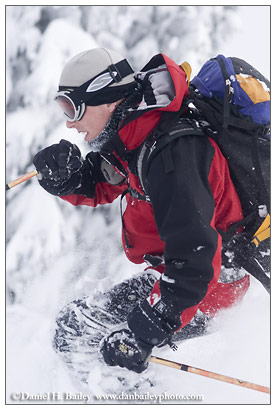
5. Snow As The Subject:
Sure, the snow is your environment and background, but what about making it the subject itself, or an important secondary element that plays off of the main subject. Again, this may take some creativity and experimentation.
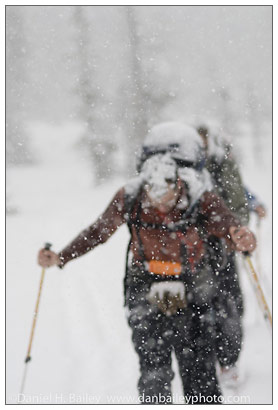
So, stay warm, stay dry and stay inspired by all the white stuff, because winter is truly a great time for photography!
Dan Bailey is a professional adventure, outdoor and travel photographer based in Anchorage, Alaska. He just published his first eBook, How to Become a Pro Photographer. Follow his blog at danbaileyphoto.com/blog and see his daily updates at facebook.com/danbaileyphoto.
Related Content:
All Photography How-To Guides
Photography Forums


Thanks for the great article, Dan! I’ve got a tip to add. Use the histogram display on your camera to check your exposure. It’s somewhat dependant on conditions, but you want to make sure you get the snow as close to white as possible without blowing it out and losing detail. To do that, set your exposure so your histogram is as far to the riight as possible without going off the scale and “clipping” your highlights. If your camera has a highlight clipping display, that’s also useful. For more on how your camera’s histogram display works, here’s an article on how to read and use the histogram: http://www.photographyreview.com/histogramguidecrx.aspx
Great article with interesting response from Photo-john
Do you want even better looking winter photographs if you do try using a polarizer filter to reduce and control glare…sometimes you get this 3D effect when using a polarizer which has to be seen to be realized.
Don’t forget the exposure length. Moving skiers usually require 1/1200 or better to freeze (no pun intended). 1/600 to get crisp snow flying off their skis, or 1/400 if you want the flakes to streak. Manual or shutter speed priority is a must. A neutral gray card also comes in handy. I shoot 2500+ ski race photos each weekend (over 40,000 in the past few years.) Digital make this so much easier!
Nice article and helpful comment from John, thanks. Any advice on shutter speeds to best capture falling snow when the snow itself is the subject, like in No. 5? I end up with a lot of big blobs. Maybe I need a faster shutter speed.